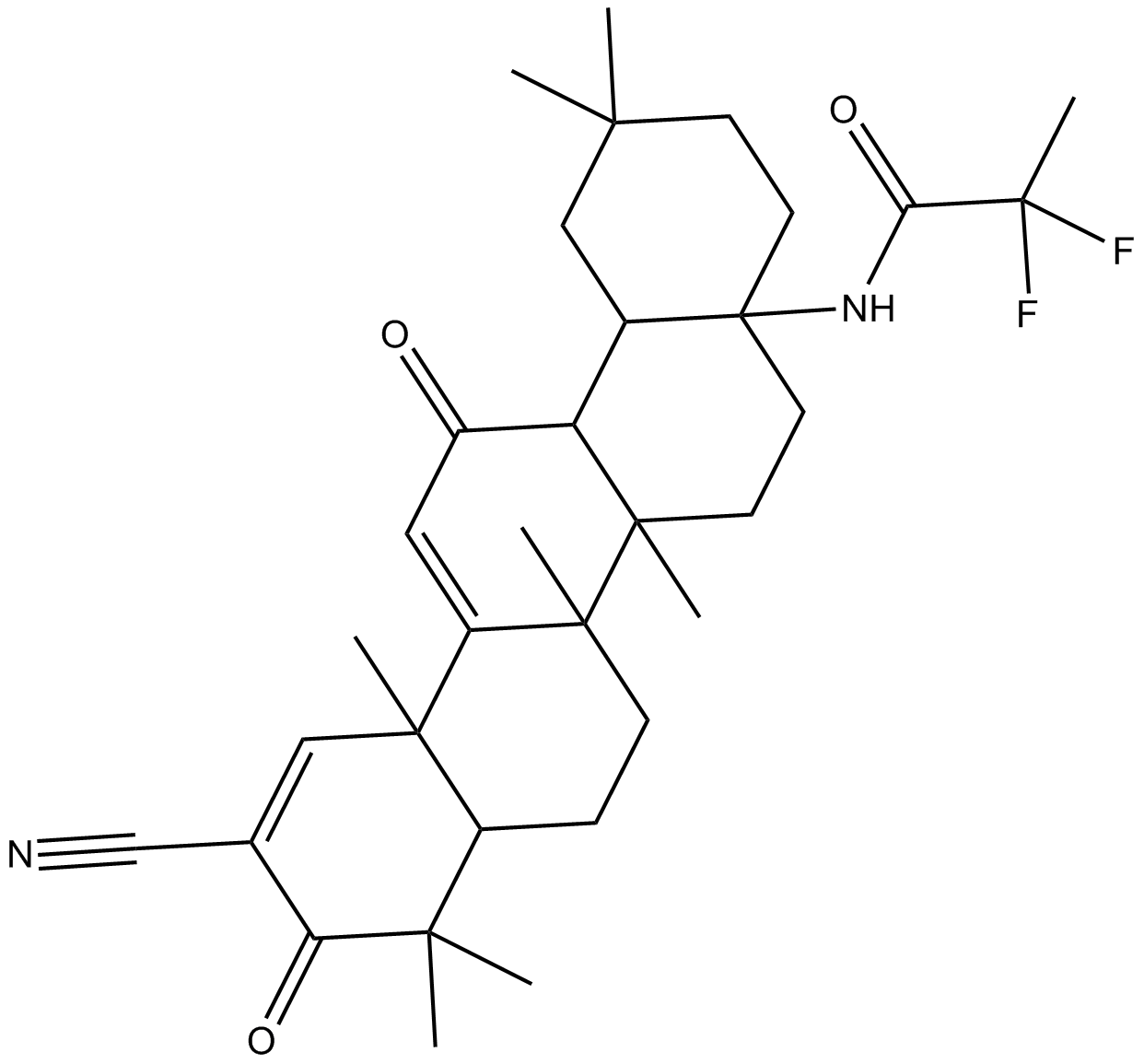Omaveloxolone (RTA-408) (Synonyms: Omaveloxolone) |
| Katalog-Nr.GC13693 |
Omaveloxolon (RTA-408) (RTA 408) ist ein antioxidativer EntzÜndungsmodulator (AIM), der Nrf2 aktiviert und Stickstoffmonoxid (NO) unterdrÜckt.
Products are for research use only. Not for human use. We do not sell to patients.

Cas No.: 1474034-05-3
Sample solution is provided at 25 µL, 10mM.
RTA-408 is an antioxidant inflammation modulator (AIM), which activates Nrf2 and suppresses nitric oxide (NO). RTA-408 attenuates osteoclastogenesis by inhibiting STING dependent NF-κb signaling.
To evaluate the anti-inflammatory activity of RTA-408, RAW 264.7 mouse macrophage cells are treated with RTA-408 for two hours and then IFNγ is added to stimulate NO production and release into the media. RTA-408 dose-dependently reduces NO concentrations in the media with an IC50 value of 4.4±1.8 nM. The potency of RTA-408 in this assay is similar to that of Bardoxolone methyl, which has an IC50 value of 1.9±0.8 nM. Nrf2 activation is required for AIM-mediated NO suppression. A decrease in nitric oxide synthase 2 (Nos2) protein levels is observed in bardoxolone methyl-treated RAW 264.7 cells, which is attenuated when Nrf2 mRNA levels are reduced by siRNA. To evaluate the anticancer activity of RTA-408, a panel of eight human cell lines derived from tumors of different origin are treated with RTA-408 and measured cell growth 72 hours later using the sulforhodamine B (SRB) assay. RTA-408 inhibits the growth of all tumor lines with an average GI50 value of 260±74 nM. To determine whether RTA-408 induces apoptosis, the panel of tumor cells are treated with RTA-408 and the caspase substrate, DEVD-AFC, for 24 hours. RTA-408 dose-dependently increases DEVD-AFC cleavage, indicating that RTA-408 treatment triggers caspase activation in cancer cells. Caspase-3 and caspase-9 cleavage is also observed by western blot at the same concentrations of RTA-408 that increases DEVD-AFC cleavage[1].
To determine whether RTA-408 is an effective mitigator of hematopoietic acute radiation syndrome after bone marrow-lethal doses of total-body irradiation (TBI), mice are administered 3 daily injections of 17.5 mg/kg RTA-408 beginning 24 h after TBI. Teatment with RTA-408 results in the 35 day survival of 100% of 7 Gy (LD40/35) TBI mice (P<0.05) and 60% of 7.5 Gy (LD100/13) TBI mice (P<0.0001)[2].
References:
[1]. Probst BL, et al. RTA 408, A Novel Synthetic Triterpenoid with Broad Anticancer and Anti-Inflammatory Activity. PLoS One. 2015 Apr 21;10(4):e0122942.
[2]. Peng Han, et al. RTA-408 Protects Kidney from Ischemia-Reperfusion Injury in Mice via Activating Nrf2 and Downstream GSH Biosynthesis Gene. Oxid Med Cell Longev. 24 December 2017.
[3]. Goldman DC, et al. The triterpenoid RTA 408 is a robust mitigator of hematopoietic acute radiation syndrome in mice. Radiat Res. 2015 Mar;183(3):338-44
Average Rating: 5 (Based on Reviews and 14 reference(s) in Google Scholar.)
GLPBIO products are for RESEARCH USE ONLY. Please make sure your review or question is research based.
Required fields are marked with *




















